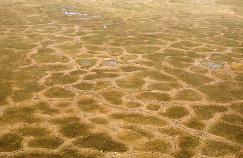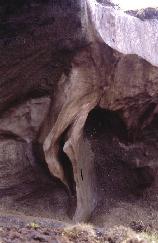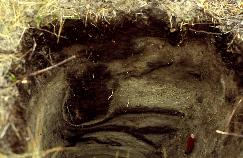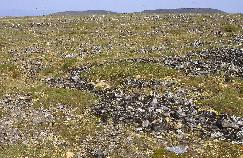Periglacial features associated with permafrost-affected (Cryosolic) soils in the Yukon Territory

Massive Ground Ice. Soil can develop on top of melting snow and ice. Ground ice can also form within soil in the form of horizontal ice lenses and vertical ice wedges.

Polygonal ground (ice wedge polygons).

Ice Wedges. This ice wedge is dark colored because dirt and dust become concentrated as the snow and ice melt. This ice wedge is probably a remnant of a previous ice age.

Cryoturbation (frost chruning).

Patterned ground (sorted nets). Rock and rubble accumulates along the edge of sorted nets.